Meet Oregon Coast Seaweed Farmer and Marine Educator Alanna Kieffer
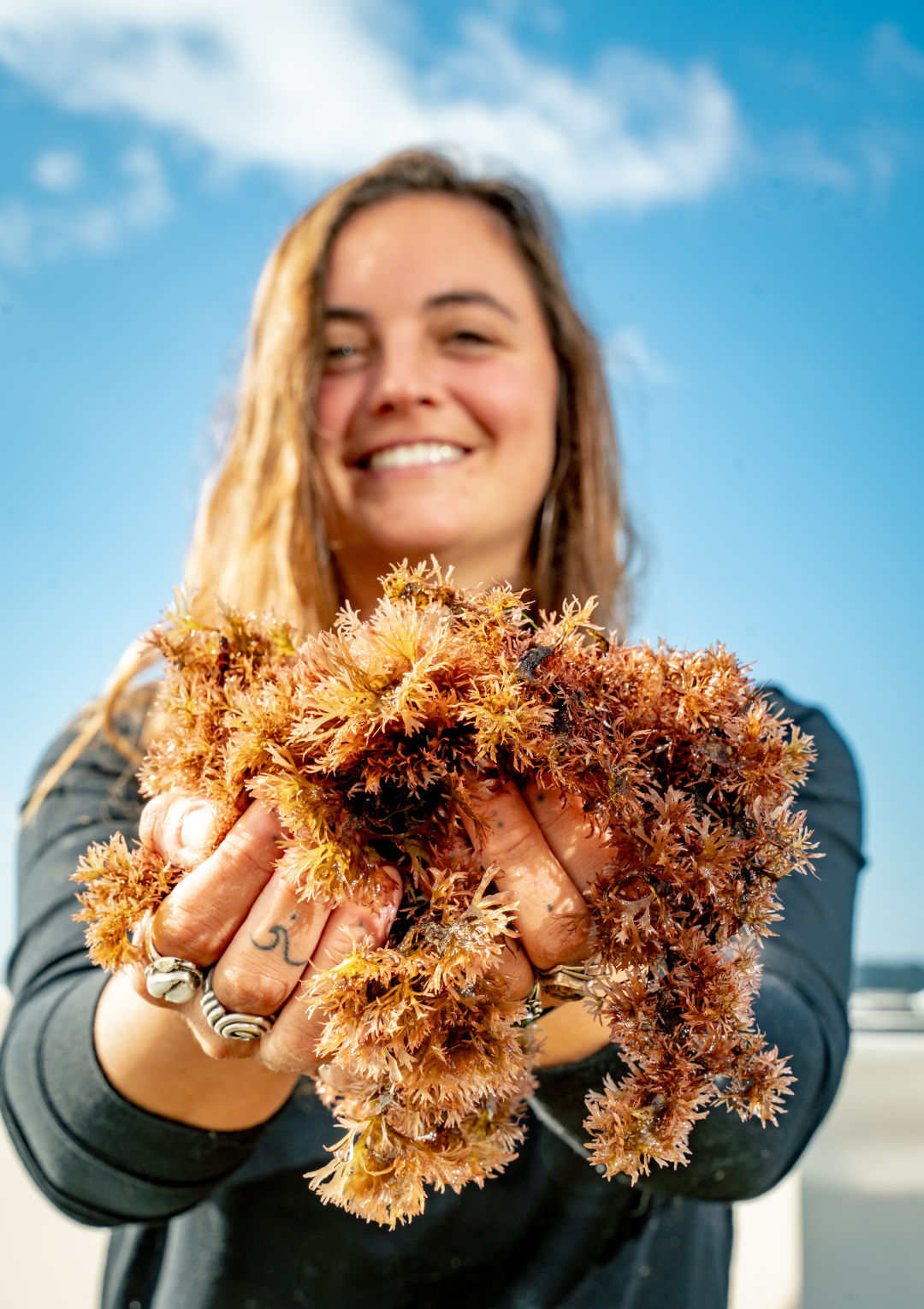
Alanna Kieffer, holding Pacific dulse she helped grow, has become one of Oregon’s most fervent seaweed advocates.
Standing in shin-deep water with a slippery tangle of sugar kelp wrapped around her legs, Alanna Kieffer holds up a strand of sea lettuce to the early-morning sunlight, and it glitters a translucent green. “People are always talking about the Oregon Coast as ‘where the forest meets the sea,’” she says. “But look—there’s forest out here, too.”
Six of us stand among the shimmering browns and greens as the morning sun burns off a lingering fog. Despite a cold breeze, Kieffer wears shorts and sandals. She laughs about defying her own directions to wear sturdy, closed-toe footwear for this seaweed foraging workshop, which she teaches in Garibaldi through her company, Shifting Tides. But it’s immediately evident that Kieffer, who grew up on the East Coast and studied marine biology at Oregon State, is at home out here, confidently navigating slick rocks and dark pools while the rest of us slide and wobble. She also leads workshops in mussel foraging, bay clamming, crabbing, and tide pooling—in addition to her day job at Oregon Seaweed, where she farms and sells Pacific dulse.
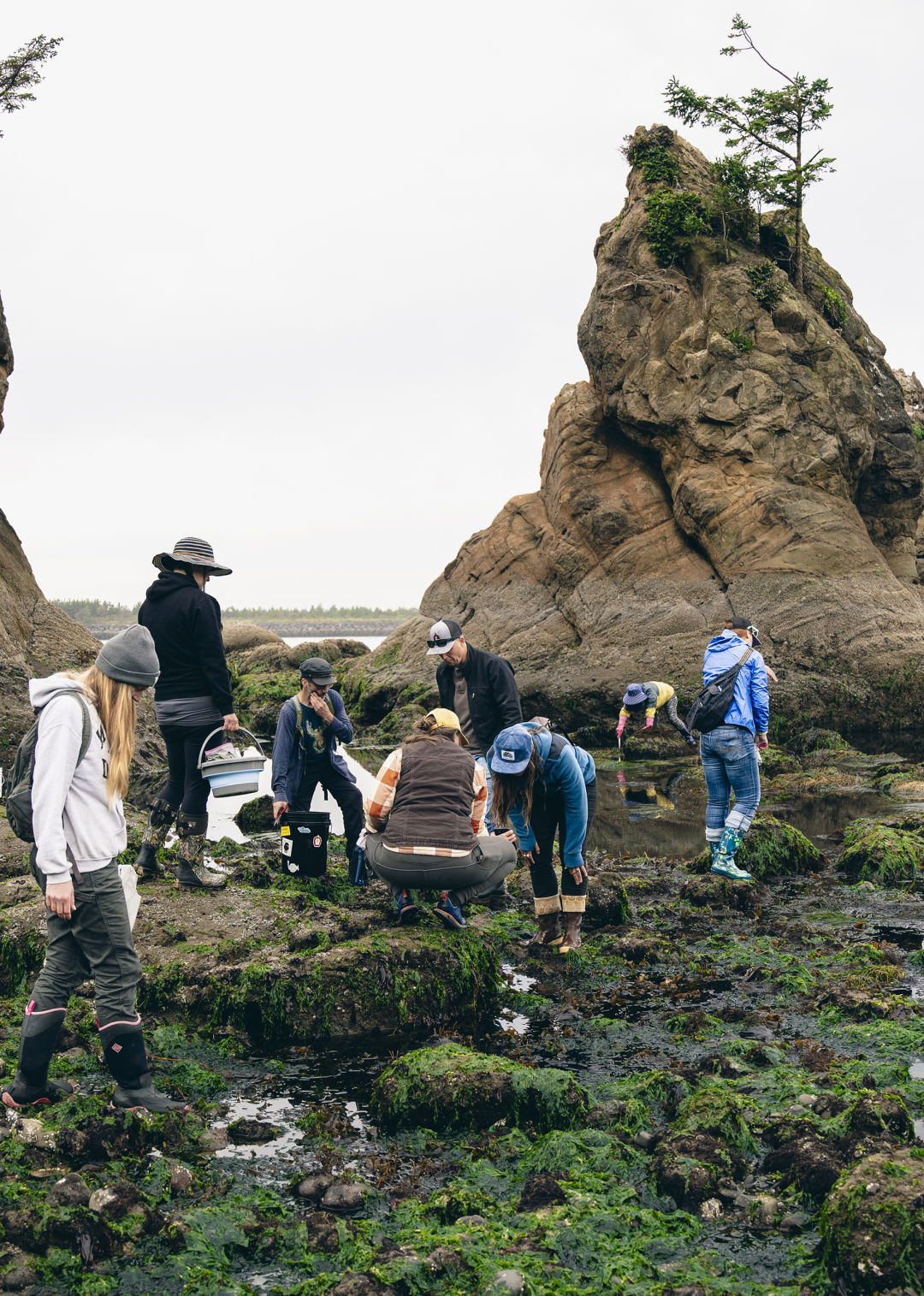
Through her company Shifting Tides, Kieffer (center, in blue cap) leads workshops on coastal foraging.
Pacific dulse is on the menu during Winter Waters, an event series spotlighting seaweeds, bivalves, and other local seafood at restaurants and businesses up and down the Oregon Coast (and at a few inland locations, including in Portland). It began as a single seaweed-focused dinner in 2023, organized by Kieffer, seafood marketer Rachelle Hacmac, and food systems strategist Kristen Penner. Two years later, it’s a sprawling celebration, running February 1 through March 2, of the many types of ocean farming that can have benefits for the environment, also known as regenerative aquaculture. Seaweed farms, for example, serve as powerful carbon sinks. Oyster farms sequester nitrogen and filter ocean water; adult Pacific oysters, like the ones that will be served by chef Maylin Chávez at a seaweed and oyster social at the Redd in Portland on February 18, filter about 50 gallons of water a day before they’re harvested.

Kristen Penner shucks oysters at Winter Waters, an event series she cofounded with Kieffer and Rachelle Hacmac.
On March 2, Kieffer herself will host a tour of fisheries in and around Port Orford, including an urchin ranching facility and a bull kelp hatchery. Also on deck: a multicourse dinner at Local Ocean in Newport, a night of special seaweed beers at Loyal Legion’s Beaverton beer hall, a seaweed-cyanotype workshop in Cannon Beach, and hand roll–making with Ippai PDX chef Jane Hashimawari.
Here on the coast, where we can reach out and touch the delicacies that will be plated and celebrated at Winter Waters, Kieffer calls us over to identify a wet, wrinkly patch of dark green nori. This one we all know from the dried sheet version sold in grocery stores. Nori is far from her favorite, so she moves on quickly to point out sugar kelp (great for wrapping fish to bake) and sea grapes (fun to squeeze like little water balloons, and which Kieffer once stuffed with ricotta, an achievement of creativity more than flavor).
We focus on a handful of the tastiest seaweeds, but more than 50 varieties grow in Oregon’s rocky intertidal zone. While commercial harvesting is strictly regulated, from March 1 to June 15, recreationalists may gather up to one gallon per day, up to a total of three gallons per year. Bonus: Unlike much land-based foraging, there’s no serious risk in misidentifying what you find. Not all seaweed is tasty, but none of it is poisonous.

When fried, Pacific dulse tastes bright and smoky.
After an hour of splashing and slicing at slippery strands, we climb over boulders to the parking lot, where Kieffer sets up a camp stove and fries some dulse with olive oil, salt, and pepper. It turns from reddish brown to bright green in a flash and tastes bright and smoky. Pacific dulse is found in the waters we just picked through, but this one comes from Oregon Seaweed, a land-based farm where dulse is grown in tanks year-round. (It will also be part of the March 2 tour.) Pre-pandemic, Kieffer worked at California’s Catalina Island Marine Institute, where she taught shark biology and kayaking classes for kids and spent her free time swimming through the lush kelp forests just offshore. When COVID-19 hit, she moved to Seaside and soon caught wind that Oregon Seaweed, based in the South Coast town of Bandon, was building a new site in Garibaldi, 200 miles north and closer to the bigger coastal cities and to Portland, where dulse was increasingly popping up on menus.

In Kieffer’s day job at Oregon Seaweed, she farms and sells Pacific dulse, which grows in 1,500-gallon tanks.
A land-based seaweed farm is a pretty simple operation, requiring minimal energy and resources to maintain. Water is pumped in from the ocean, filtered through a UV light, and then circulated with bubblers in 1,500-gallon tanks that hold the seaweed. Dulse is a clonal species, so when little bits break off, they keep growing; it doesn’t need to be fed or bred. As climate change strains global food systems, advocates such as Kieffer envision fast-growing seaweed as a food source for both people and livestock.
Kieffer helped get the tanks up and running, then shifted to sales and promotion, knocking on doors, meeting with chefs and restaurant owners, and encouraging them to add dulse to their dishes. When Oregon Seaweed needed a place to grind its dulse flakes, Kieffer had her studio apartment approved by the Oregon Department of Agriculture as a licensed processing facility, and the grinding machine sat on her kitchen table. The manual work was a mess, and despite hanging bed sheets and strategically positioning fans, seaweed dust coated everything. (The company has since outsourced the grinding.) She embarked on her own culinary experiments, too, draping long strands of it over cabinet doors to dry. Roasted dulse, prepared just like kale chips, became a favorite. “I wish I could get these into every bar in Portland,” she says.

Kieffer also leads workshops on mussel foraging, bay clamming, crabbing, and tide pooling.
For my part, I never paid much attention to seaweed before Kieffer’s workshop. But that day in Garibaldi, steeped in her enthusiasm for the vast expanse of edibles we’re wading through, the ocean clicks into a different kind of focus. Back home, I tell my husband about the dulse-based chili crisp we sampled, and how easy it is to find this stuff in the wild, and does he think we should try making our own? And has he heard about feeding seaweed to cows? Studies show that replacing just 1 percent of their feed with seaweed can reduce the methane emissions of their burps by 97 percent. As my excitement spills out, I drape sugar kelp and sea lettuce on our baker’s rack. Some of it goes in our pasta that night, and our kitchen smells like the coast.

More than 50 varieties of seaweed, including so-called sea spaghetti, grow in Oregon’s rocky intertidal zone.
Eat Your Veggies: 5 delicious seaweeds found on the Oregon Coast
Pacific Dulse
Found and farmed in Oregon. Brownish red, translucent when fresh. Takes on a briny, smoky flavor when cooked. Dried dulse flakes can be sprinkled like salt, giving a little ocean flavor to salads, pastas, and meats.
Sea Lettuce
Lime-green algae that clings to intertidal rocks in long, silky sheets. Has a bright, umami flavor when fresh. Eat dried, blanched, steamed, fried, or dehydrated. Like land lettuce, gets along well with other veggies.
Oregon Bull Kelp
Grows in deep water but can be salvaged when it breaks off and floats to the beach. Sea urchins eat kelp and have exploded in numbers in the last decade—so kelp forests are struggling. Leave the living stuff alone! Grows up to 10 inches a day. Long stipe and bulbs are hollow and poppable. Sliced stipe rings make delectable pickles.
Nori
The most commercially successful seaweed. Found crinkled and coating rocks, bunched up in slick folds in shades that range from olive to forest green and on grocery store shelves as crispy, salty sheets. Popular for sushi.
Bladder Wrack
Fun to say and to play with. Also called black tang, rockweed, sea grapes. Brown and yellow. Little balloons squirt air and water when you squeeze them, and help the plant float to get more sunlight. Used by some to treat digestive issues, urinary tract infections, thyroid dysfunction, and more.
Note that recreational foraging of living seaweed is open from March 1 to June 15. You don’t need a permit, but do heed regulations (you may harvest up to one gallon per day, up to a total of three gallons per year) and follow best practices to minimize your impact on the surrounding ecosystem.
Share this content:





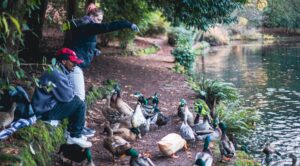


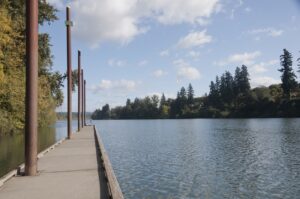
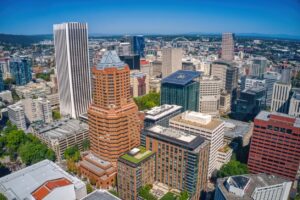


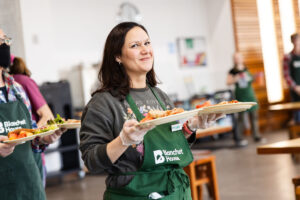


Post Comment